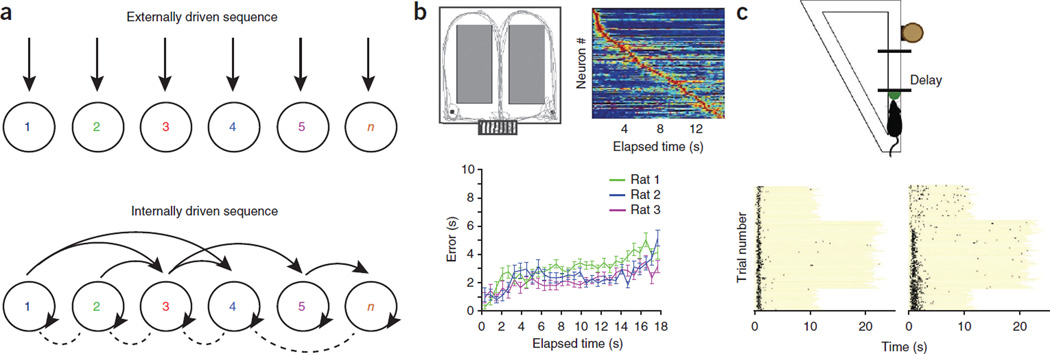Figure 4.
Cell assembly sequences, space and time tracking. (a) During physical travel, successive assemblies of neurons (1 to n) respond sequentially owing to the changing constellation of environmental landmarks and/or proprioceptive information from the body (top). During mental travel, sequential activation is supported by self-organized patterning59. Not only first order (neighbor) but also higher order (non-neighbor) connections can be represented in strongly connected recurrent networks. (b) Inferring elapsed time from self-organized cell assembly sequences during wheel running in a spontaneous alternation task. Top left, the rat’s travel path superimposed on the maze. The start area is the wheel (bottom). Top right, normalized firing rate sequence of neurons during wheel running, ordered by the latency of their peak firing rates (each line represents a cell). Bottom, accumulating errors of time prediction (in seconds) calculated from a probabilistic model for inferring elapsed time from the phases of spikes with respect to theta oscillation. Note high precision of time prediction during the entire episode of wheel running. (c) Time tracking by neuron sequences during the delay part of a task of a working memory go/no-go task in a linear maze (top). The delay varied between 10 and 20 s in consecutive blocks, as indicated by the length of the yellow lines (bottom). Some neurons maintain their spike timing (left), whereas others ‘re-time’ (right) when the length is abruptly changed. Panel b reprinted with permission from ref. 65, c from ref. 93.

